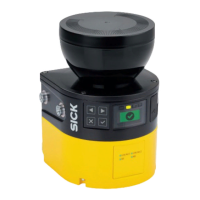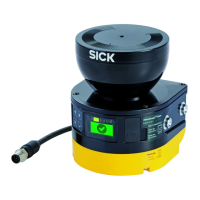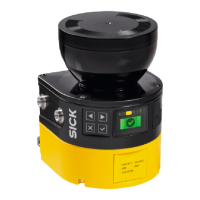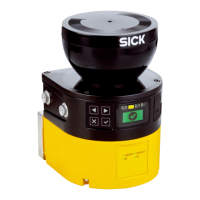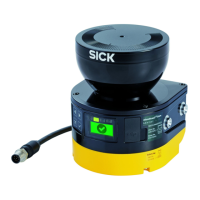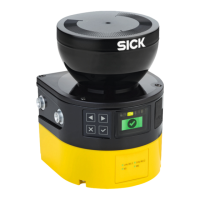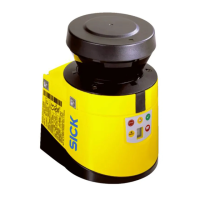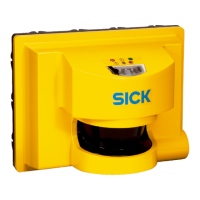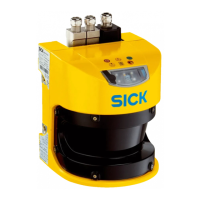Important information
DANGER
H
azard due to lack of effectiveness of the protective device
In the case of non-compliance, it is possible that the dangerous state of the machine
may not be stopped or not stopped in a timely manner.
1. Calculate the required minimum distance for your machine using the following
formulas and examples.
2. Take this calculation and the specifications in these instructions into account
when mounting the safety laser scanner.
3. Take this calculation and the specifications in these instructions into account
when configuring the safety laser scanner.
4.3.8.2 Calculating minimum distance
Overview
T
he calculation of the minimum distance is based on international or national stand‐
ards and statutory requirements applicable at the place of installation of the machine.
If the minimum distance is calculated according to ISO 13855, then it depends on the
following points:
•
Machine stopping time (time interval between triggering the sensor function and
the end of the machine’s dangerous state, including signal propagation times in
the network and processing time in the control)
•
Response time of the protective device, see "Response times", page 172
•
Reach or approach speed of the person
•
Resolution (detection capability) of the safety laser scanner
•
Type of approach: orthogonal
•
Parameters specified based on the application
•
Supplement to prevent reaching through
Important information
NOTE
A
dditional information is available in the ISO 13855 standard and in the Guide for Safe
Machinery.
NOTE
SIC
K offers a stopping/run-down time measurement service in many countries.
Calculation example of the minimum distance S according to ISO 13855
T
he example shows the calculation of the minimum distance for an orthogonal
approach to the protective field. A different calculation may be required depending on
the application and the ambient conditions (for example, for a protective field parallel to
or at any angle to the direction of approach or an indirect approach).
b
Calculate S using the following formula:
S = 1600 mm/s × T + 850 mm
where:
°
S = minimum dis
tance in millimeters (mm)
°
T=stopping/run-down time for the entire system in seconds (s)
(Response time of the safety laser scanner + machine stopping time, incl.
r
esponse time of the machine control system and signal propagation time)
The approach speed is already included in the formula.
4 P
ROJECT PLANNING
46
O P E R A T I N G I N S T R U C T I O N S | microScan3 – PROFINET 8021219/1ELL/2022-01-21 | SICK
Subject to change without notice
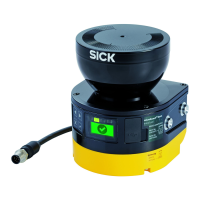
